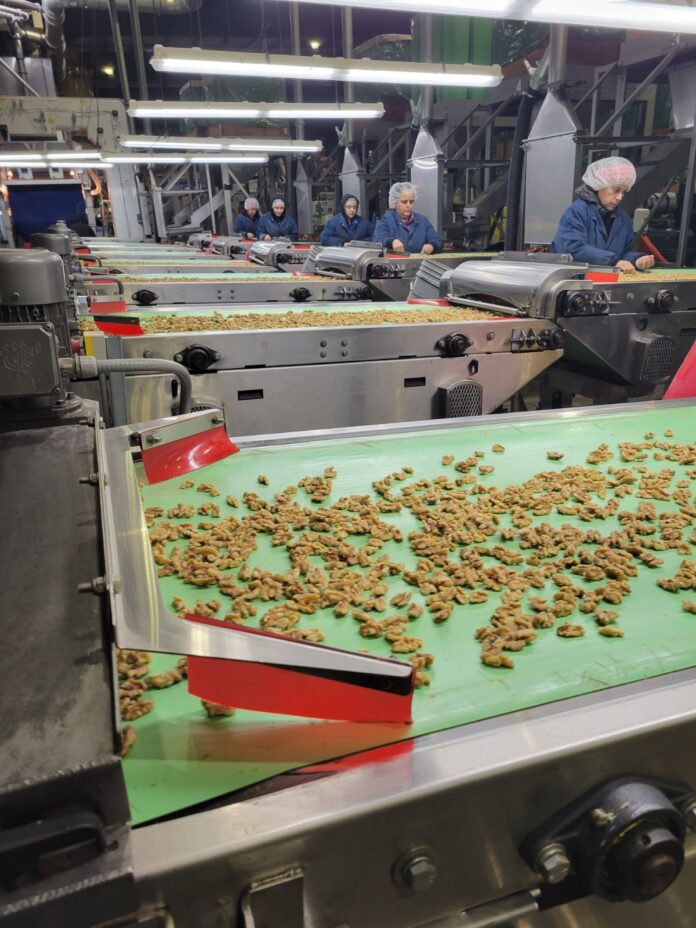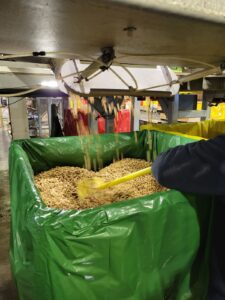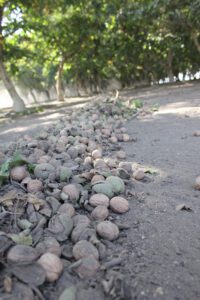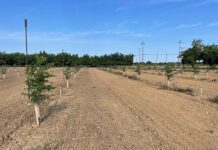
Understanding the global marketplace for California walnuts and ensuring reliable quality and freshness for buyers are pathways for the walnut industry to improve prices for growers. Innovative products, grower/handler collaboration and improved grading are key strategies that the industry will need to implement to have an impact on prices.
For now, prices remain tough. Robert Verloop, executive director and CEO of the California Walnut Board and Commission, said in February walnut pricing is expected to remain under pressure through 2024. A three- to five-year correction may be needed, he added.
Current annual walnut production in California is about 823,000 tons but needs to be pared down to 625,000 to 675,000 to balance supply with demand, he noted. Growers can hope for better walnut prices in the future, but UCCE Farm Advisor Emeritus Bob Beede noted at the annual Tri-County Walnut Day in Tulare there is no guarantee prices will rebound anytime soon.
Varying degrees of hurt by low walnut prices across the state has sparked multiple conversations about how nuts are marketed in domestic and export markets. Some walnut growers have responded to low returns for their crop by removing a record number of acres in the last two years.
Orchard removals may make the walnut industry leaner.
“They may be part of the solution but not a solution,” Verloop said.
Eric Heidman of Diamond Walnut Growers, Brent Barton of GoldRiver Orchards/Barton Ranch and Mike Poindexter of Poindexter Nut weighed in on some of the root causes for low walnut prices at Tri-County Walnut Day in Tulare and pointed out strategies for improving the market.
Their discussion, led by Verloop, focused on global markets and developing a better understanding of consumer needs. He noted that market demand has shifted away from the basic commodity raw inshell nuts to value-added products.
“The challenge to handlers is to shift from being suppliers of a commodity to investing time and effort in value-building partnerships,” Verloop said.
Concentrate Marketing Efforts on High-Spec Products
Poindexter noted of the 72 walnut handlers in the state, very few are developing demand with new products, but they are still supported by growers.
“Talk to handlers and find out what they are doing to close the gap,” he added.
Barton, a walnut grower and partner in GoldRiver Orchards, a walnut processor and handler, said the Escalon-based business is focused on developing high spec walnut products coupled with customers that value those products.
Their market expansion is targeting Japan and Korea with their new products. They are also meeting packaging needs for those customers and coupling that with customers that value high-spec products.
“They want superior quality, including color and very, very few kernel defects,” Barton said of their Japan and Korea markets.
GoldRiver also wants to develop additional reliable markets for non-Chandler inshell.
While 60% of GoldRiver’s product is Chandler, he said the remaining 40% of their volume is important and needs additional attention. Barton said they are also looking to develop markets where light kernel color may not be the primary consideration.
“We think a good market exists, and we have an opportunity to do better.”
Eric Heidman, vice president of Grower Services at Diamond Foods, said his company is aggressively widening its footprint in the snack market with portable grab-and-go-size packaging and new flavors. Diamond has also introduced a new line of crunchy nut toppers for the salad audience. One of their marketing highlights is supplying the glazed walnuts for Chinese fast food Panda Express restaurants. Duplicating this success across other restaurants is a primary goal, Heidman said.
Product Innovation
“We are working with retailers to develop more in-store sales promotions, looking for year-round promotional opportunities and elevating their knowledge about walnuts,” Verloop said.
Sales activation is his biggest concern as the California walnut industry has not worked to create relationships with retailers except for the big buyers, which he said is a lost opportunity. Food service is another market that needs attention, he added. New products such as culinary ingredients and components and educating customers about the need to preserve shelf life by proper handling and refrigeration of walnuts are other avenues that need exploring.
Heidman said a variety of Diamond’s new walnut products are headed for the snack aisle. Portable grab and go sizes and new flavors including Hot Honey and Maple Glazed have been introduced. They also have sweet and savory trail mixes. Further innovations include nut-based pie crusts.
“More cool things are coming,” he said.
Barton said GoldRiver ships mostly shelled product, and most of it is destined for further value-added use. For that product innovation, he said it is important to understand the end user’s needs.
California Walnut Board and Commission initiatives are seeking to partner with food service and food manufacturing firms in co-developing new uses and applications for walnuts, something which GoldRiver heartily supports.

Attention to Quality
Rancidity and freshness are the biggest barriers to growing domestic markets.
Heidman said there is not enough awareness of alignment among both sellers and buyers, and as a result, on-shelf quality of walnuts can vary greatly. Education about in-store and at-home storage is key, he added, as walnuts are more perishable than people think and need refrigeration to preserve freshness.
Mandatory refrigeration along the supply chain may be an answer to preserving walnut quality, Barton said. Refrigeration during the warmer months would ensure better quality. Effect of high temperatures in transit may not be noticeable at first, Barton said, and refrigeration would make it possible for more handlers to avoid quality problems. He suggested a ‘standard for cold storage’ validation that the product has been kept cold throughout the supply chain would ensure a quality product.
“It would not be easy, and there is an expense, but it would be something to do to improve returns,” Barton said.

Strengthen Grower-Handler Collaboration
Barton said this involves continuing to develop new products and supply chain efficiencies between growers, their huller-dryers and processors. Better, value-added markets for shells, walnut flower or oil stocks will be explored.
Processors can even curate new product and new services development ideas from their grower network. Interconnected systems can maximize knowledge and use of optimal agronomic practices to promote orchard productivity and potentially reduced production Input costs along with harvesting costs.
Intra-handler opportunities could involve co-marketing, capacity sharing and specialization. Logistics networking could potentially reduce transportation costs.
Crop Estimation, Grades and Standards
Improved, digitized and standardized incoming grading of the walnut crop could improve product utilization from start to final disposition, Barton said.
“This would reduce or even eliminate the subjectivity that currently exists in the incoming grading process and be a huge win for us growers.”
Improved market reporting and sharing context with buyers could also help move product at superior and disciplined pricing, he noted.











